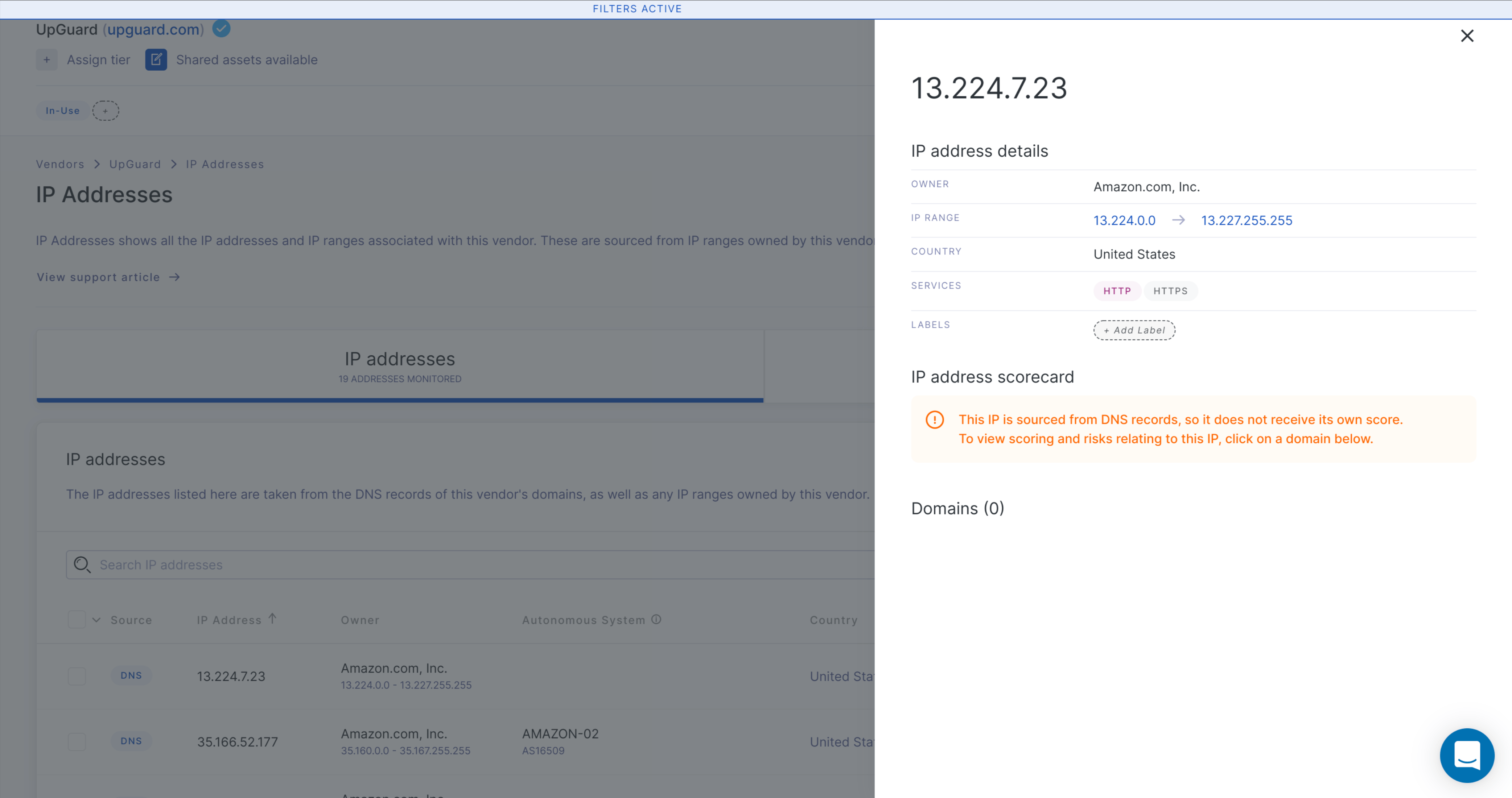How to filter a vendor’s IP addresses and IP ranges
Learn how UpGuard's filters can help you monitor and assess your vendors' IP-based assets with filtering
The IP Addresses page helps you monitor your vendor’s IP addresses and IP ranges by automatically finding IP addresses and IP ranges associated with the DNS records of their domains.
Before you can filter a vendor’s IP addresses and IP ranges, you’ll need to be monitoring the vendor. Learn how to monitor a vendor here. Once you’ve monitored the vendor, you’ll need to select them.
First, navigate to Vendor Risk > Vendors in the sidebar.

Now you’ll need to search for the vendor. In this example, I’ll search for UpGuard (1) and click on the corresponding row to open UpGuard’s Vendor Summary (2).

Select your vendor, in this case UpGuard, then navigate in the side menu to IP Addresses.

Now you’re on the vendor’s IP addresses, you’ll see two tabs IP addresses (1) and IP ranges (2).

How to filter a vendor’s IP addresses
To filter your vendor’s IP addresses, click IP addresses (1) then click Apply filters (2).

Clicking Apply filters brings up a panel that lets you filter by services, IP owner, ASN, and IP country. Set the parameters you want to filter by and select Apply.

You’ll now see a filtered list of IP addresses. You can also export the filtered list by clicking the export button in the top right corner of your screen. Learn more about exporting from IP addresses.

If you want more information, clicking on an individual IP address brings up a panel showing the owner, associate IP range, country, autonomous system (AS), autonomous system number (ASN), and any associated domains. If the IP address is not associated with a domain, you’ll see any risks associated with the IP address rather than associated domains.

How to filter a vendor’s IP ranges
To filter your vendor’s IP ranges, click IP ranges (1) then click Apply filters (2).

Clicking Apply filters brings up a panel that lets you filter by IP owner, ASN, and IP country. Select the parameters you want to filter by and click Apply.
-2.png)
You’ll now see a filtered list of IP ranges based on your search. You can also export the filtered list by clicking the export button in the top right corner of your screen. Learn more about exporting from IP addresses here.

If you want more information, clicking into the range brings up a panel showing the owner, country, and number of IPs in the range, as well as any detected IP addresses or domains.

See also:
